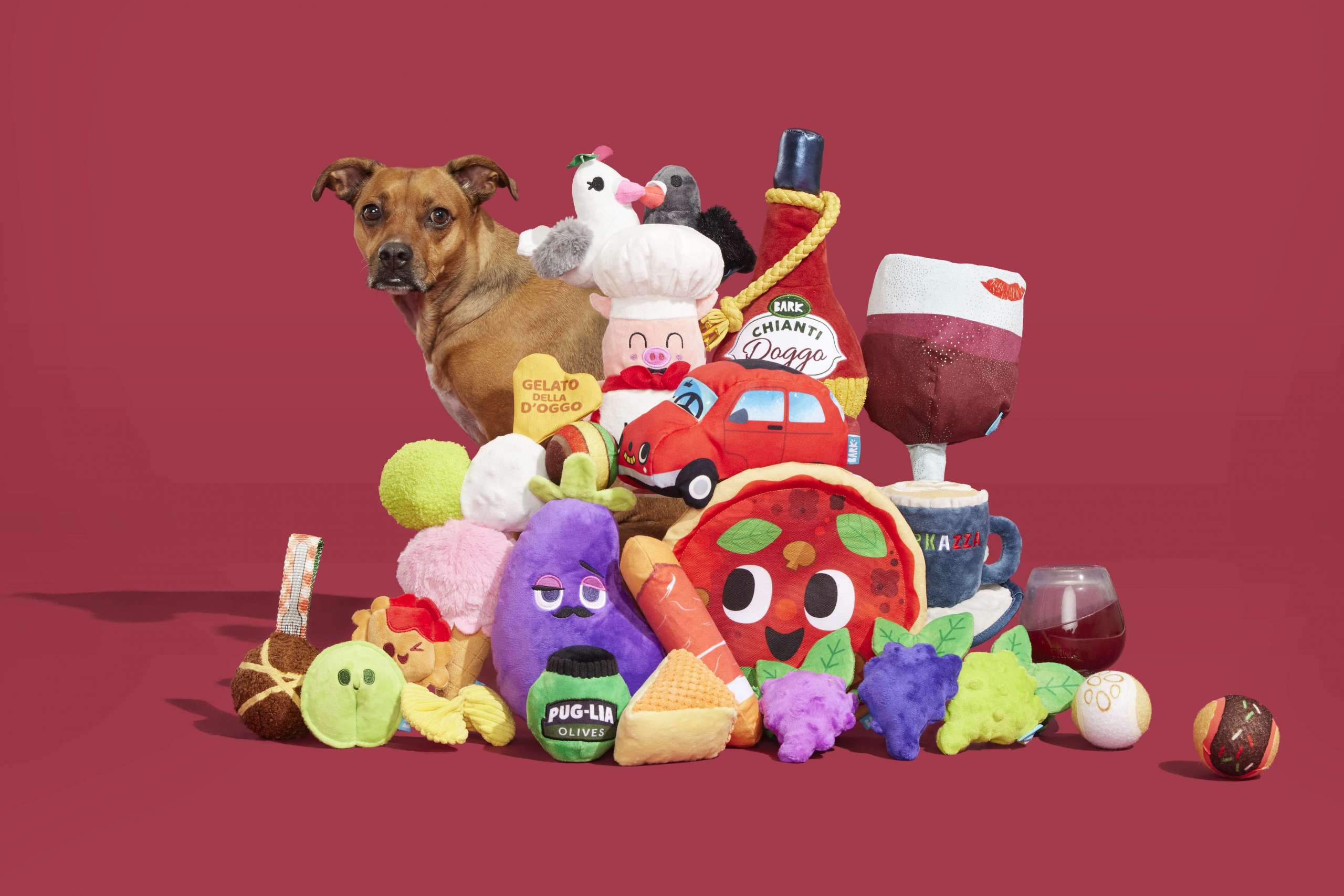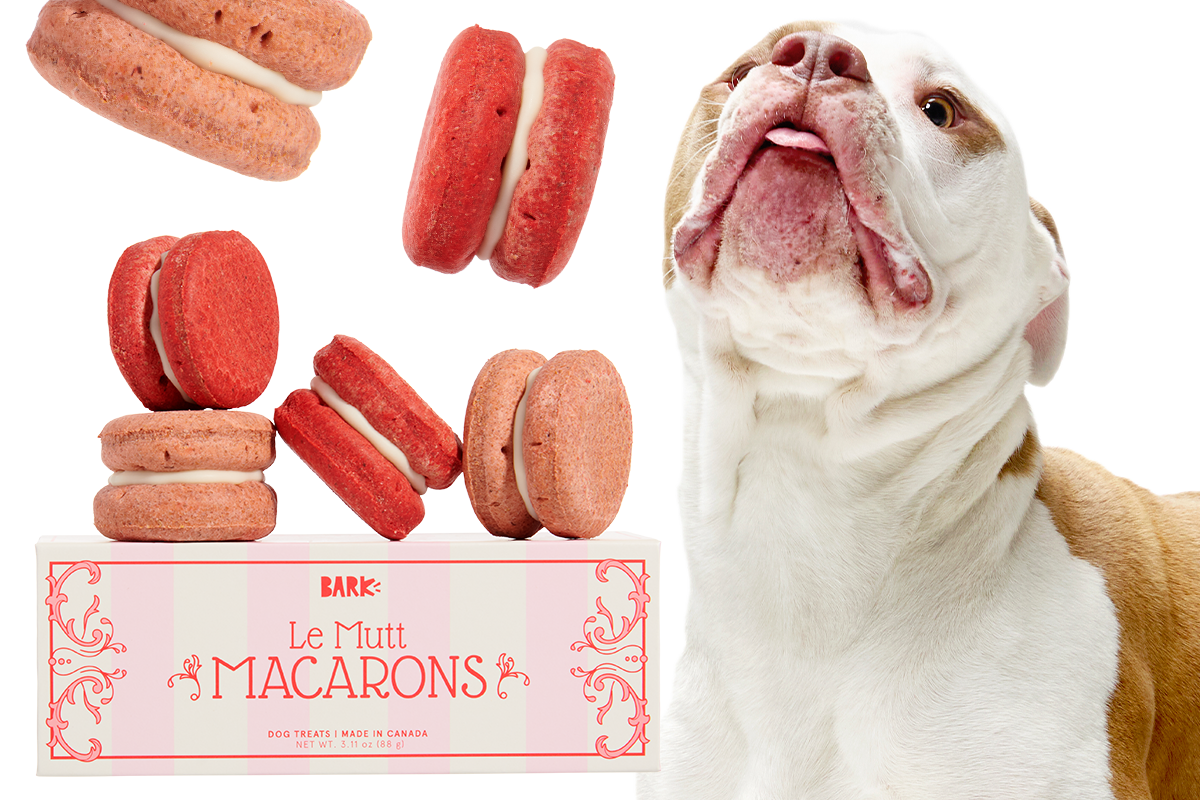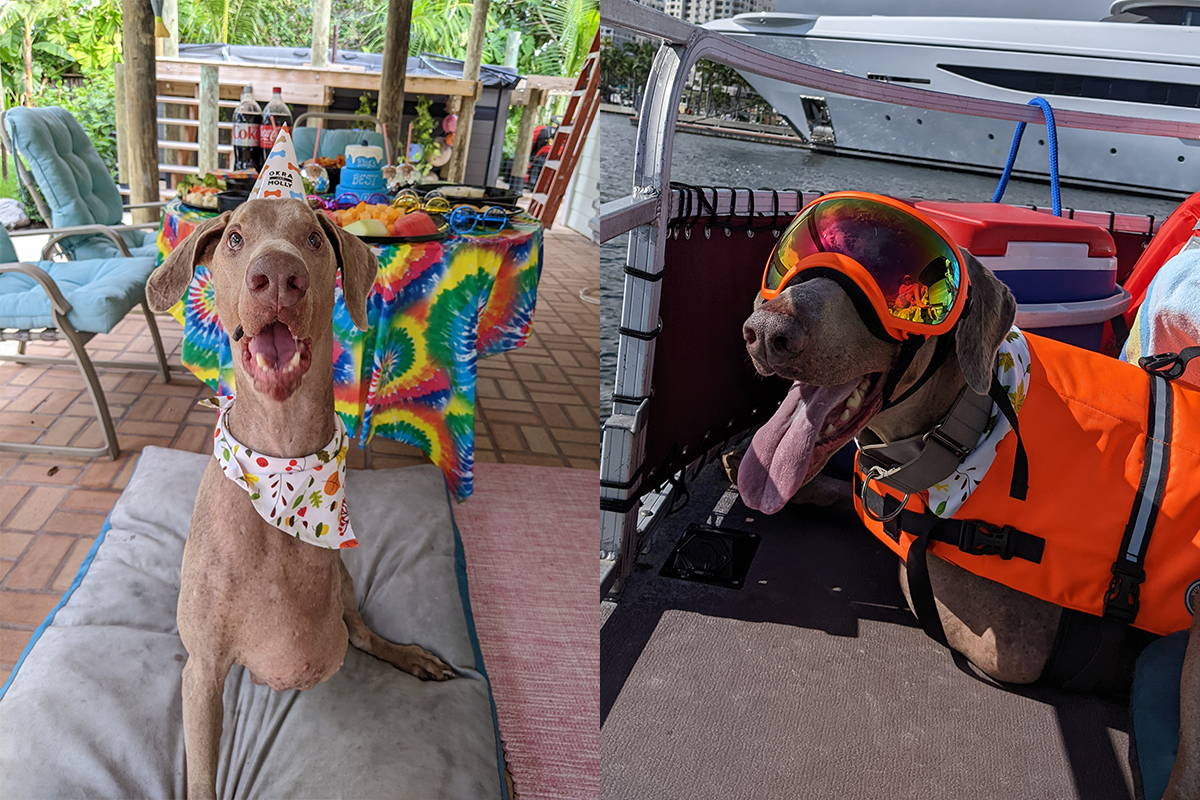Ready for a dog breed that’s a little ruff and tumble? The Blue Heeler has no reservations about getting their paws dirty. As a classic working dog, this determined, Blue Heeler pup is ready and raring to go, whether it means herding cattle across the wilderness or chasing a tennis ball across the park.


Tall, sturdy, and muscular, the Heeler is a snappy, handsome pooch with a gorgeous coat that ranges from white to red to the gorgeous blue-gray that’s earned this breed its charming name. Of course, it’s not all about looks when it comes to the Australian Cattle Dog. This is a smart, capable, and energetic breed that’s ready to join you on your next adventure.
Breed Overview
Also Known As…
Commonly known as the Australian Cattle Dog or the Australian Blue Heeler, this cunning cutie also answers to a drove of other names. Have you… herd them? There’s the Queensland Heeler, The Wonder from Down Under, and The True-Blue Best Friend of You. Of course, there’s also Freckles. And Speckles. Blue Aba Dee Aba Dog.
What Is The History Of The Blue Heeler?
When it comes to Blue Heeler history, in the 1800s British settlers in Australia traveled from their coastal strongholds to the interior reaches of the vast continent, hoping to use the terrain for cattle ranching. Their initiative required one essential import: trusted herding dogs. Unfortunately, British cattle dogs were used to the more tepid climates of England and struggled to manage the less-hospitable inland environment.
Eager to create a herding breed with higher endurance and fortitude than their old-world pets, Queensland breeder George Eliot began crossing the English Smithfield breed with Australia’s native feral dingoes and Scottish Collie breeds. Eliot’s mix was a hit with ranchers. But it wasn’t until two brothers, Jack and Harry Bagust of Sydney combined Elliot’s breed with the Dalmatian that the Blue Heeler dog we know and love today emerged onto the scene.1
With the stamina to keep up with the high demands of the ranching lifestyle and the loyalty to follow their owners wherever they went, this herding dog became a quintessential part of rural Australian life. But with those adorable looks, it was only a matter of time before the Australian Blue Heeler made a name beyond the cattle plain.
By the 1980s this herding breed made its way to the United States and earned its American Kennel Club recognition.2 Today, you don’t need to be a rancher to appreciate the incredible qualities of the sweet and excitable Blue Heeler dog. There are also several other popular dog breeds that were once considered herding dogs, including the German Shepard and the Australian Shepard.
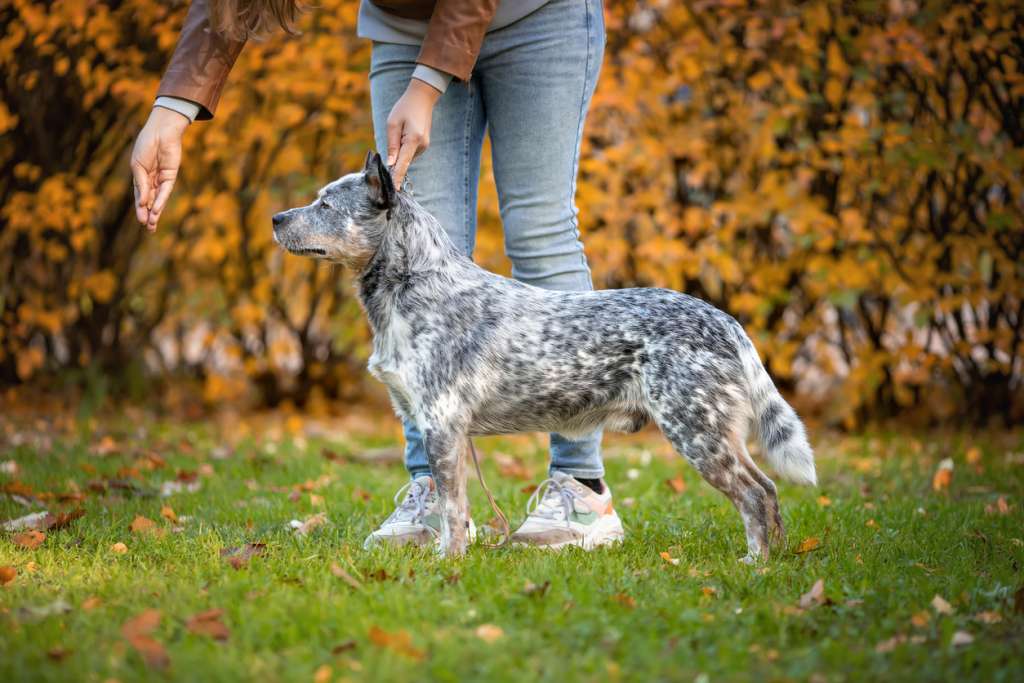

How Big Do Blue Heelers Get?
Height: 17–20 inches
Weight: 35–50 pounds
How Long Do Blue Heelers (Generally) Live?
There’s lots of life in this breed. In fact, Blue Heelers have particularly long lifespans for dog breeds of their size, living an average of 12 to 16 years.
What Is A Blue Heeler’s Temperament & Personality Like?
As a born and bred working dog, similar to the Great Pyrenees, your Blue Heeler puppy will likely display enough focus and drive to make you feel guilty for reaching for the remote. But no matter if you’re a rancher or a city slicker, expect a deep connection with your Blue Heeler. This breed loves to be around their favorite people at all times, making it difficult to leave them alone for long periods.
Their loyalty can also make them a little wary of strangers, though as long as you make proper introductions, they’re likely to get along splendidly with friends and family. Your pup might even fall in love with a new person if they offer them treats, toys, and an opportunity to play. Blue Heelers are always up for dog sports such as a game of fetch, tug of war, or even a dip in the lake. Yes, Blue Heelers love to swim, so consider a trip to the beach with your pup for a paw-some time.
Are Blue Heelers Good With Kids? Cats? Dogs?
Sure, Blue Heelers are leaders by instinct—used to pushing around enormous animals, and protecting farms from predators. That said, there’s no reason your proud cattle dog can’t also be a tender pooch, especially around children.
Take care to socialize your Blue Heeler early on, introducing them to kids—and obedience training—as soon as possible. Of course, you should always supervise young children when interacting with a new dog and ensure they know the proper way to handle pets.
Blue Heelers have no problem romping around with other dogs or even cats. This always-agile, maybe-mischievous breed may have a slight penchant for chasing around other animals, but this can quickly turn into a fun game for all involved (as long as your pets have proper dog training).


Are Blue Heelers High Energy?
This breed goes and goes and goes. With the stamina to chase cows around the harsh Australian wilderness, it’s no surprise that Blue Heelers have energy for days.
You don’t need to own a farm to care for a Blue Heeler, but you do need a fairly open schedule. This breed needs at least 2 hours of exercise a day, and while a simple walk could manage some of their physical needs, they’re usually happiest when given a chance to run leash-free. Come into a bit of land? Training for a marathon? Meet your perfect partner.
Are Blue Heelers Hard To Train?
After spending generations working side-by-side with humans, you can expect your Blue Heeler to catch on quickly when it comes to manners, commands, and general dog training.
If you’re hoping to teach your Heeler to heel, shake, roll over, or say, all you need is a bit of positive reinforcement (in the form of treats and praise) to encourage them. Keenly intelligent with a powerful work ethic, Heelers are eager to please—and always happy to reap the rewards of a job well done.
Do Blue Heelers Have Health Issues?
If you’re looking for a sturdy, robust breed, you can’t do much better than the Blue Heeler. While dog health problems can always occur, the Blue Heeler is among the most resilient breeds around.
With that said, you’ll still need to prioritize regular veterinary appointments and seek treatment if you notice strange behavior or potential health problems.
Some health issues associated with Blue Heelers include:3
- Progressive retinal atrophy – Also known as PRA, this degenerative eye condition can lead to night blindness or even full blindness. If you suspect that your pup has vision problems, check in with your vet for the best course of action.
- Hip dysplasia – Like many dogs, Heelers are vulnerable to joint issues including hip dysplasia, which symptoms can be managed with supplements and medications.
- Hearing loss – Blue Heelers are genetically susceptible to deafness. Fortunately, many hearing-challenged Blue Heelers can still have a high quality of life with small interventions.
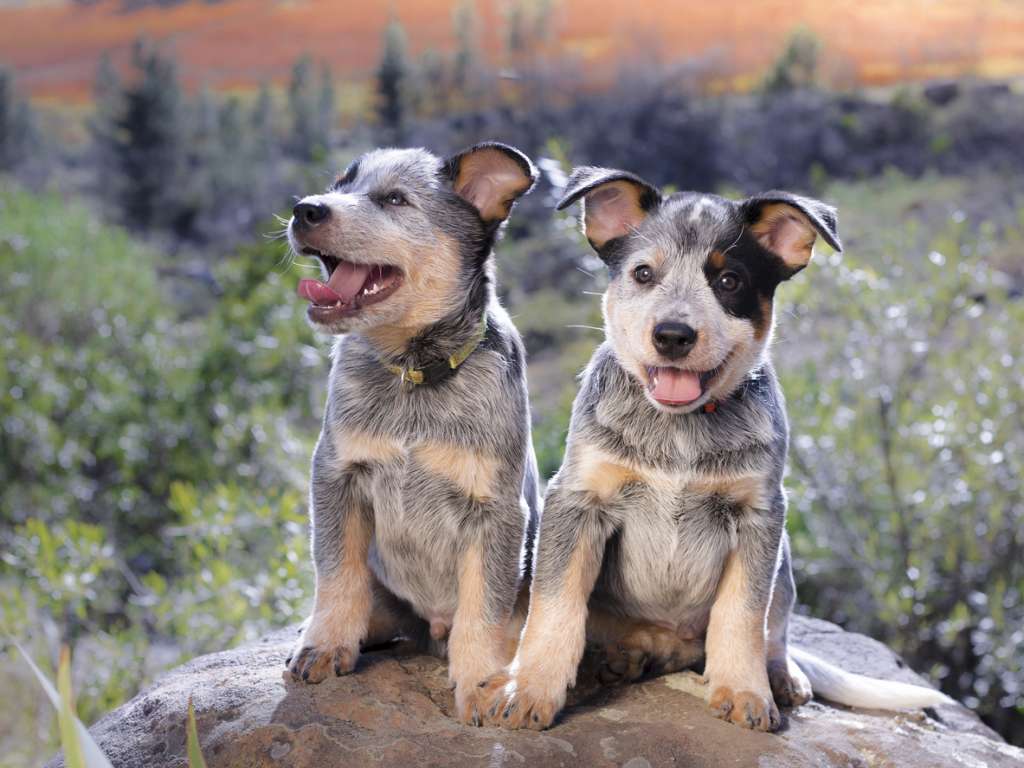

Do Blue Heelers Need To Be Groomed?
Though the Blue Heeler is a certified beauty, you probably won’t be traipsing off to the spa with this low-maintenance breed. Given their rough and tumble past, you won’t be surprised that the cattle dog’s grooming routine is, well, rustic.
Beyond regular nail clipping, teeth brushing, and ear cleaning, a quick, once-a-week brush and an occasional bath (every 2 to 3 months) should keep this rugged pup looking radiant.
Do Blue Heelers Shed?
With a thick double coat to protect them from life on the range, Heelers sure do have a lot of hair to shed. If you have sensitive allergies, you could find yourself a little sneezy, stuffy, and itchy around a Blue Heeler, especially during the spring and fall when their shedding increases.
With regular bathing and brushing, you can minimize the fur and dander floating through the air. That said, expect the occasional flurry of fur coming off your pooch.
How Much Does It Cost To Care For A Blue Heeler?
Ready to make a Blue Heeler a permanent part of your family? After adoption fees, you can expect to spend $100 to $150 per month taking care of your new pup. Typically, the first year with your new pup is the most expensive, so you can look forward to a slightly better financial outlook after 12 months with your four-legged pal.
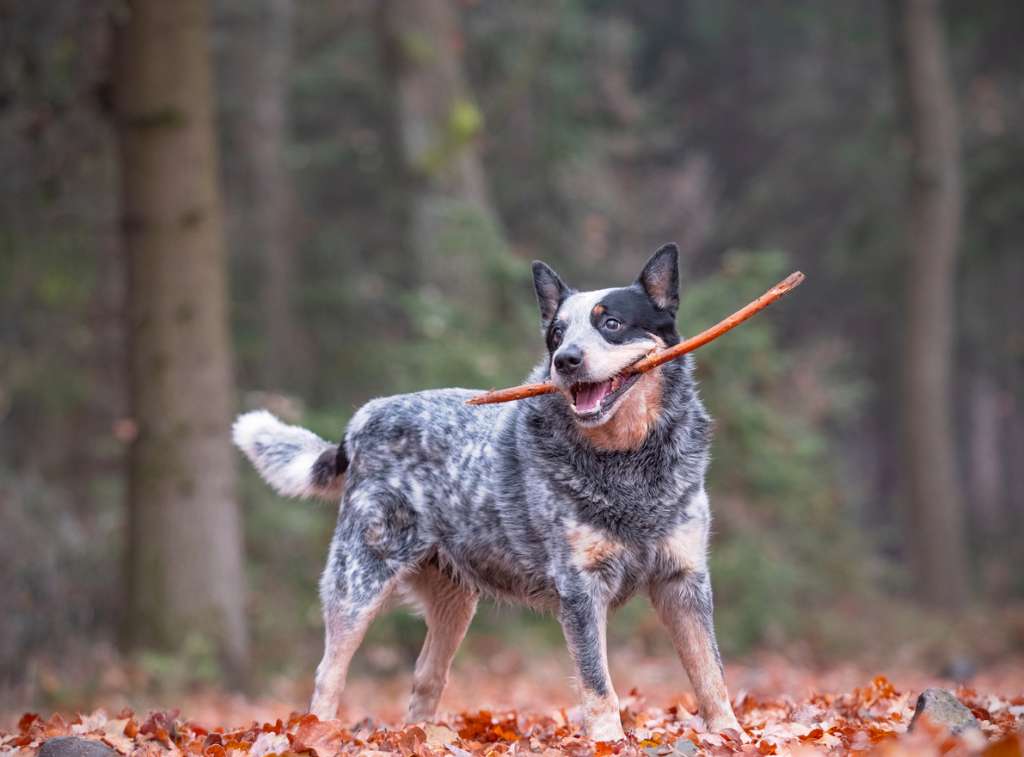

Food
A fully-grown Blue Heeler has a pretty hearty appetite. You’ll want to feed your pup 1.5 to 2.5 cups of kibble per day to keep them at a healthy weight. Estimate spending $40 to $80 per month, not including treats for training.
Simplify meal time with BARK Eats. Our perfectly portioned, dog-approved food is designed with specific breed needs in mind, so your Blue Heeler can enjoy food made just for them. Receive personalized, vet-formulated food straight at your door and take 50% off your first month!
Routine Vet Care (Healthy Dog)
Blue Heelers may be tough cookies, but you shouldn’t skip out on their regular veterinary appointment. As much as your Blue Heeler might not love visiting the vet, yearly checkups are an absolute must. A standard checkup typically costs around $50, but extra testing, bloodwork, treatment, and medications can quickly increase the costs to hundreds, or even thousands, of dollars.
By keeping up with routine care, you can protect your Heeler’s long-term health and your savings.
Preventative Medications For Blue Heeler
Protect your Blue Heeler from parasites and pests with flea, tick, and heartworm preventatives. Together, these medications can cost around $100–$300 per year, depending on your pup’s weight.
Blue Heeler Grooming
You don’t need to make any professional grooming appointments for your Blue Heeler as long as you’re comfortable taking care of their bathing, cleaning, and brushing needs. You might spend $50 to $100 purchasing grooming supplies, including brushes, combs, shampoos, and clippers.
If you prefer to bring in professionals, you can expect to pay $50 or more per appointment. Prices and services may vary extensively depending on your location, the size of your Heeler, and the services you’d like.
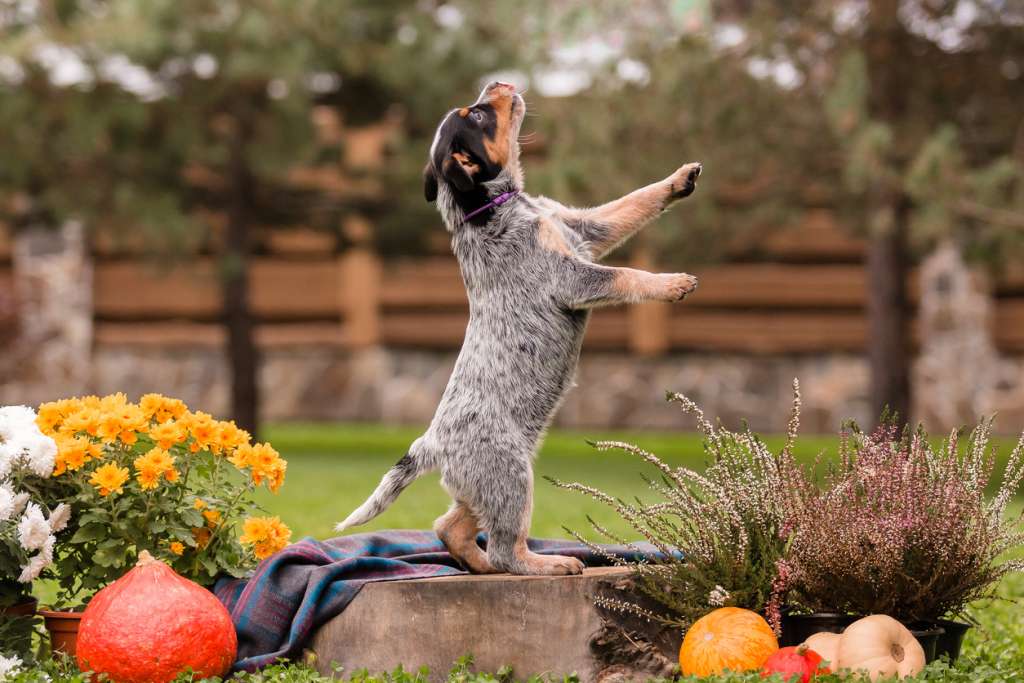

Toys, Treats, Beds, & Accessories
After shelling out for the puppy essentials like collars, bowls, and crates (which can add up to over $100 altogether), we’d recommend spending a bit more to keep your Heeler entertained. You’ll want to pick up some toys and treats to occupy your energetic bestie—and keep those new shoes safe.
The best way to keep your heeler happy? BarkBox. For $23/month, you’ll get 2 toys, 2 full-size bags of treats, and a tasty chew. For some goodies your heeler can really take a bite out of, pick up the Super Chewer subscription. This box includes 2 fluff-free, durable toys, 2 full-size bags of treats, and 2 meaty chews for $29/month. Double your first box for free!
Last—but certainly not least—you’ll want to make room in your budget to provide your Heeler with the attention they need even when you’re gone. Save some scratch for services including:
- Kenneling ($30–$50)
- Dog walking ($15–$30)
- Doggy daycare ($15–$40)
Sources:
Australian Cattle Dog Club of America. Australian Cattle Dog Breed History.
American Kennel Club. Australian Cattle Dog.
PetMD. Australian Cattle Dog.


